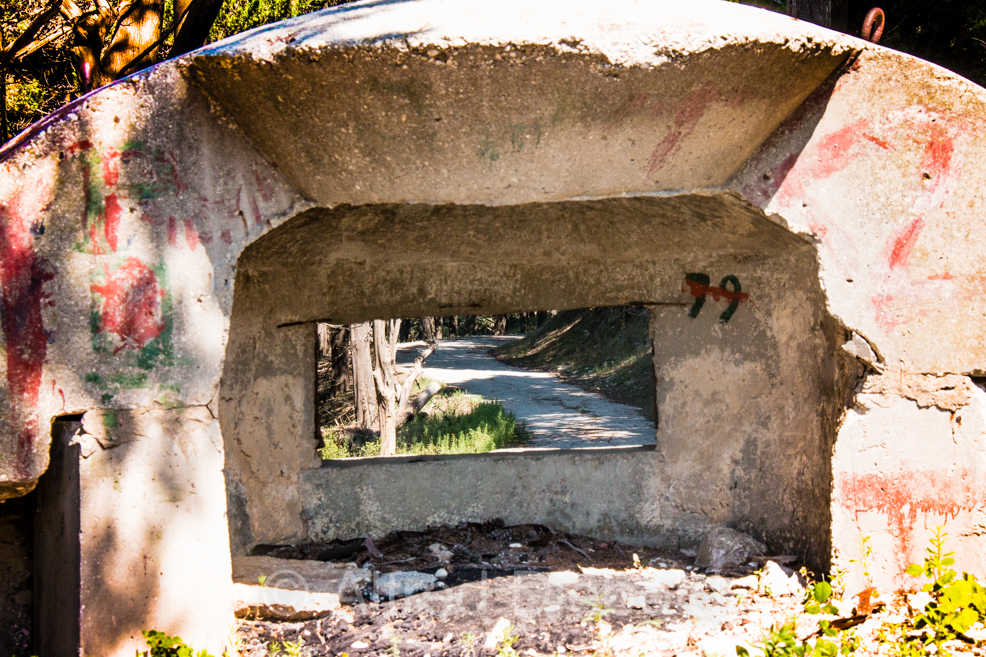

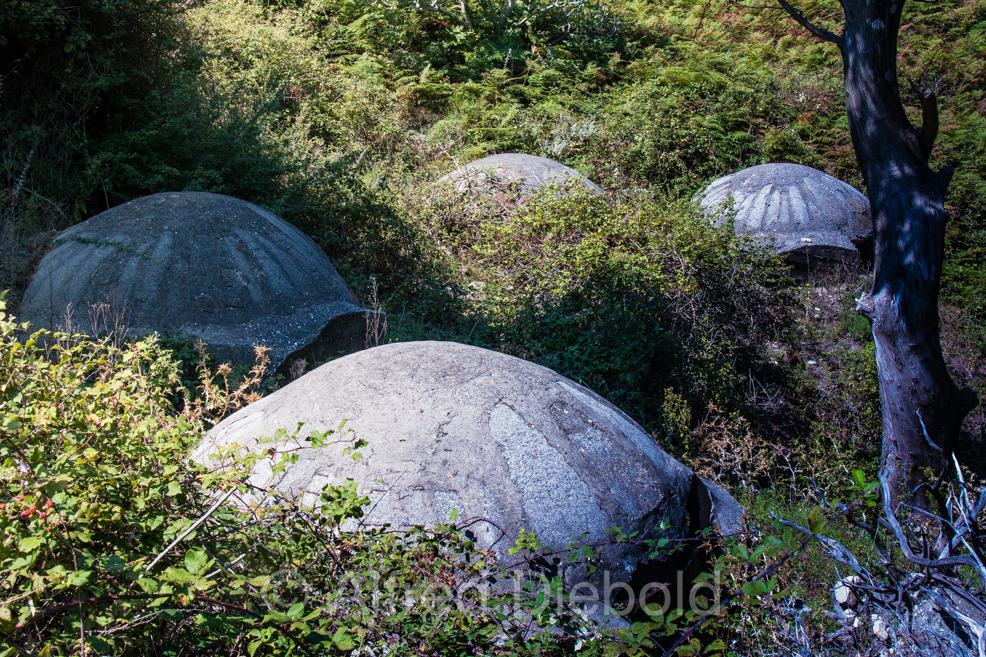



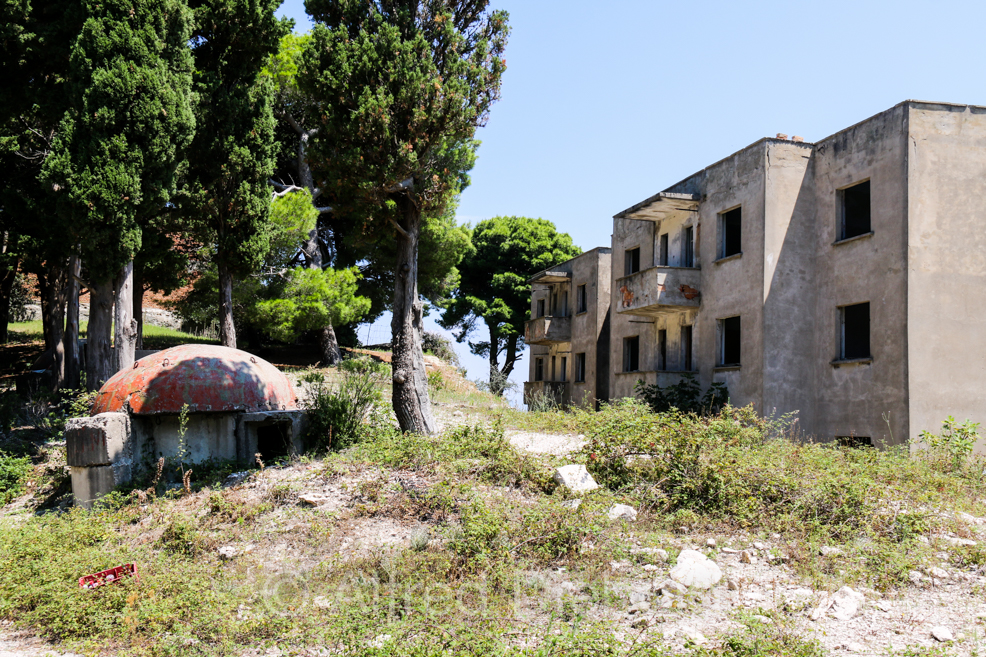

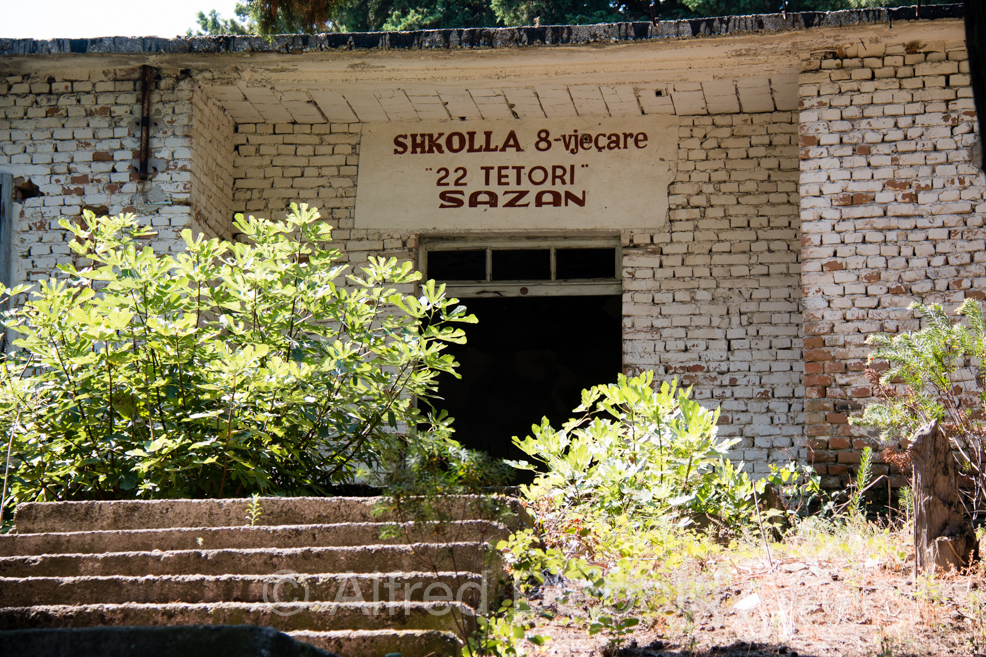

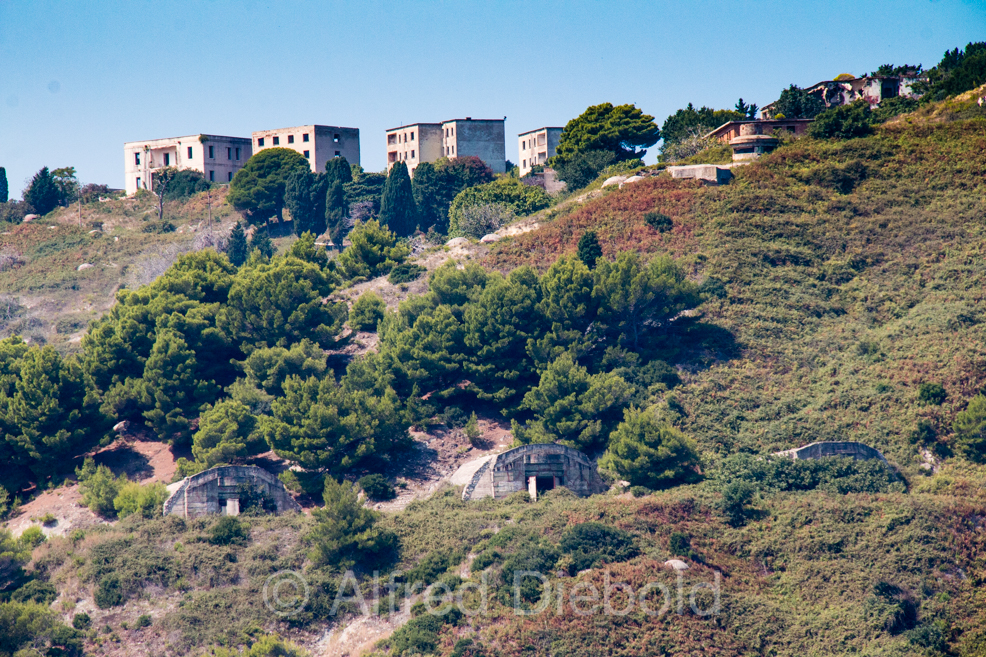

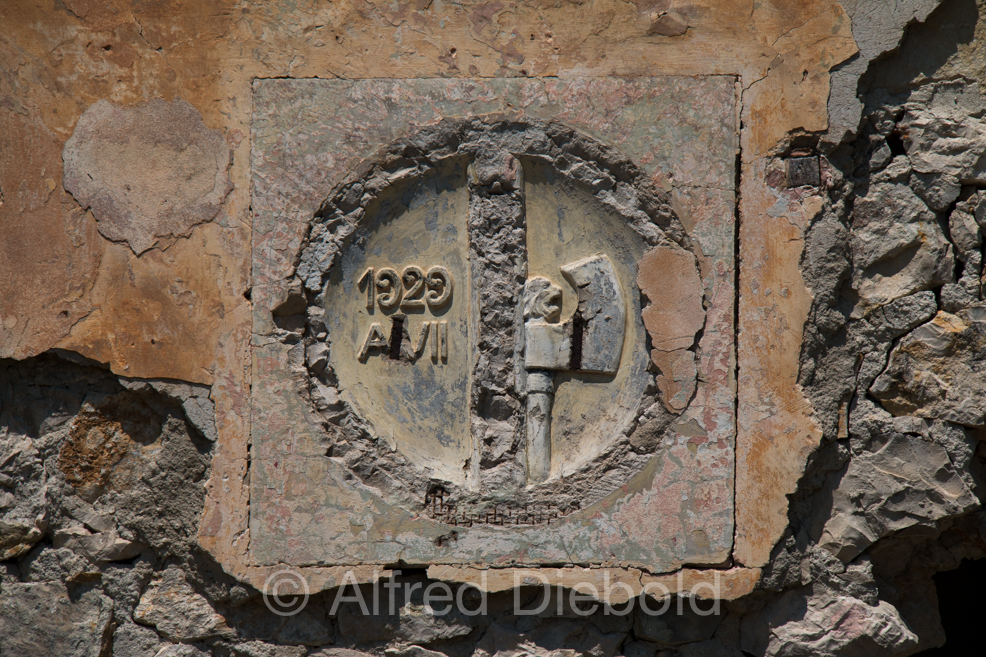



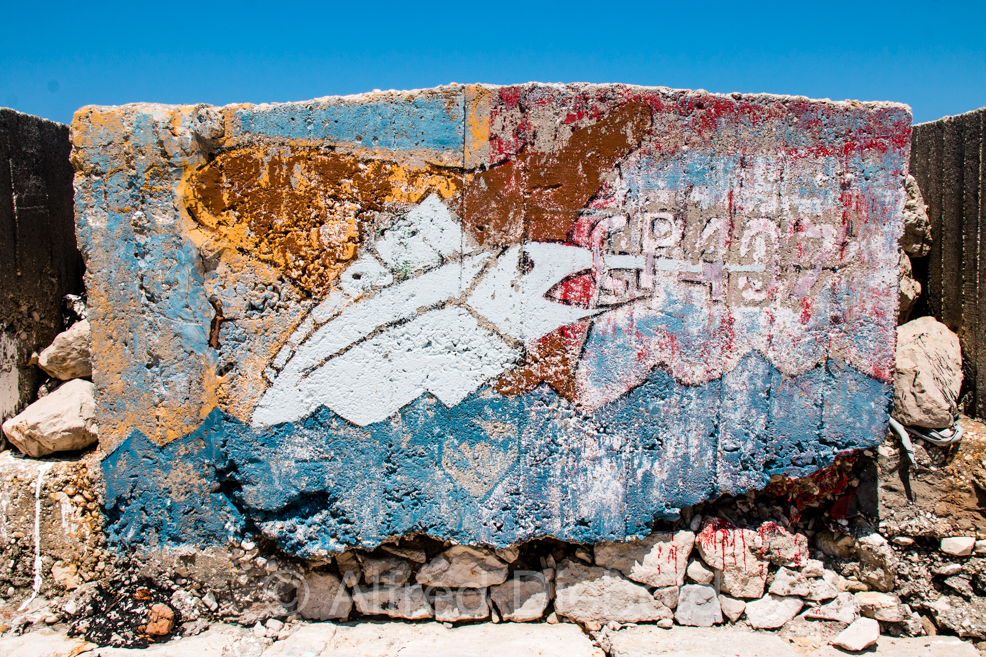













Sazan Island: Sazan (definite Albanian form: Sazani; Italian: Saseno; Latin: Saso; Ancient Greek: Σάσων) is an island inside the Mediterranean Sea in southern Albania. It is the largest island in Albania and strategically located between the Strait of Otranto and the entrance to the Bay of Vlorë, forming the border between the Adriatic and Ionian Sea. The island has a surface area of 5.7 qkm (2.2 sq mi) with a length of 4.8 km (3.0 mi), width of 2 km (1.2 mi) and a coastline of about 15 km (9.3 mi). In addition to being the largest island in Albania, it is a military zone and sometimes in clear weather it may be seen by eye from the coast of Salento, Italy in the west. The island was open to the public in July 2015. 2,721.87 hectares (6,725.9 acres) of the territory of the island’s surrounding marine area became part of the Karaburun-Sazan Marine Park in 2010 History: The Strait of Otranto on a map from the beginning of the 17th century. The island was known as Sason (Ancient Greek: Σάσων) in antiquity and was already mentioned by Polybius in a military episode taking place in 215 BC. Part of the Roman and Byzantine empires, it was captured by the Anjou of Naples in 1279, and was held by Albanian lords in the 14th century, often under the protection of Venice. The Ottoman Turks captured it around 1400, but it belonged to the Venetians by 1696. From then on, it follows the fate of the Ionian Islands, which were eventually given to Britain in 1815 as an autonomous republic under British protection. In 1864 the island was ceded to Greece with the rest of the Ionian Islands as part of Diapontia Islands, but not occupied, coming under de facto Ottoman control. It was not until the First Balkan War in 1912 that Greece landed soldiers on the island and formally claimed it. After the end of the Second Balkan War in 1913, Italy and Austria-Hungary pressed Greece to evacuate the southern part of modern Albania. Finding the island too unimportant to risk war with Italy, Greece evacuated it. Italy in turn occupied it on 30 October 1914, and established a military commander on the island, which is called Saseno in Italian. This was later ratified on 26 April 1915 by the secret Treaty of London. After World War I, Albania formally ceded the island to Italy on 2 September 1920 as part of the Albano-Italian protocol. The island was part of Italy from 1920 until World War II, it was administratively part of Lagosta, inside the Italian Province of Zara. In those years the Italian authorities built a lighthouse and some naval fortifications, and populated the island with a few families of fishermen relocated from Apulia. The island was united to the Italian Governatorate of Dalmatia in 1941 during World War II and ceded to Albania on 10 February 1947, under the postwar peace treaty with Italy. During the Cold War between the Soviet Union and the United States, Albania relied heavily on the Soviet Union. During that time, the Soviets built a Whiskey-class submarines base and a Chemical/Biological weapons plant on the island and surrounding areas. After the fall of communism four submarines remained at Porto Palermo. To this day, many Soviet-era gas masks can still be found scattered around the valley of the island. The island now is uninhabited but there is a small Italo-Albanian naval base, used mainly to counter contraband between southern Italy and Albania and as a training field for the Royal Navy. In 2010, the island’s surrounding sea waters, and those of adjacent Karaburun Peninsula were proclaimed a National Marine Park by the Albanian government.